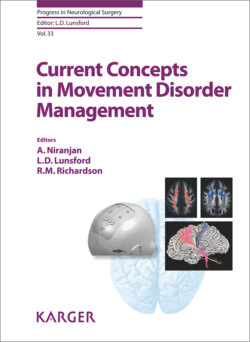Читать книгу Current Concepts in Movement Disorder Management - Группа авторов - Страница 35
Dystonia
ОглавлениеDystonia is a disease of sustained abnormal muscle contractions, resulting in involuntary slow movements, or abnormal postures, often associated with tremor. Dystonia tends to be worse with attempted movements, resulting in excessive activation of inappropriate muscle groups (overflow). Physiologically, the disease is associated with co-contractions of agonist and antagonist muscle groups. Dystonia can be primary, that is, without clear structural deficits, and without other physical findings, or secondary, for instance, as a consequence of focal brain damage or drug exposures. Brain regions that have been linked to dystonia include the basal ganglia and associated circuitry (such as putamen, thalamus, cortex or cerebellum). Secondary dystonia is a relatively common side effect of exposure to a number of “typical” neuroleptics, and can take the form of acute dystonic reactions or manifest as tardive dystonia. Dystonia can also be a component of other neurologic disorders. It is commonly seen in patients with PD, Huntington’s disease, mitochondrial disorders, or metabolic disturbances.
In adults, dystonia is most commonly focal, involving the neck (cervical dystonia), eyes (blepharospasm), or vocal apparatus (spasmodic dysphonia). In children, generalized forms of dystonia are common, and frequently genetic in origin. Numerous inciting genes have been identified [11]. One of the main forms of these genetic generalized dystonia types in children and young adults is idiopathic torsion dystonia (DYT1).
The relatively distinct clinical features of dystonia can be due to a large number of identified pathophysiologic abnormalities in the brain. A single common mechanism underlying the varied types of dystonia has not been identified. Changes in the basal ganglia and cerebellum are most frequently discussed.
